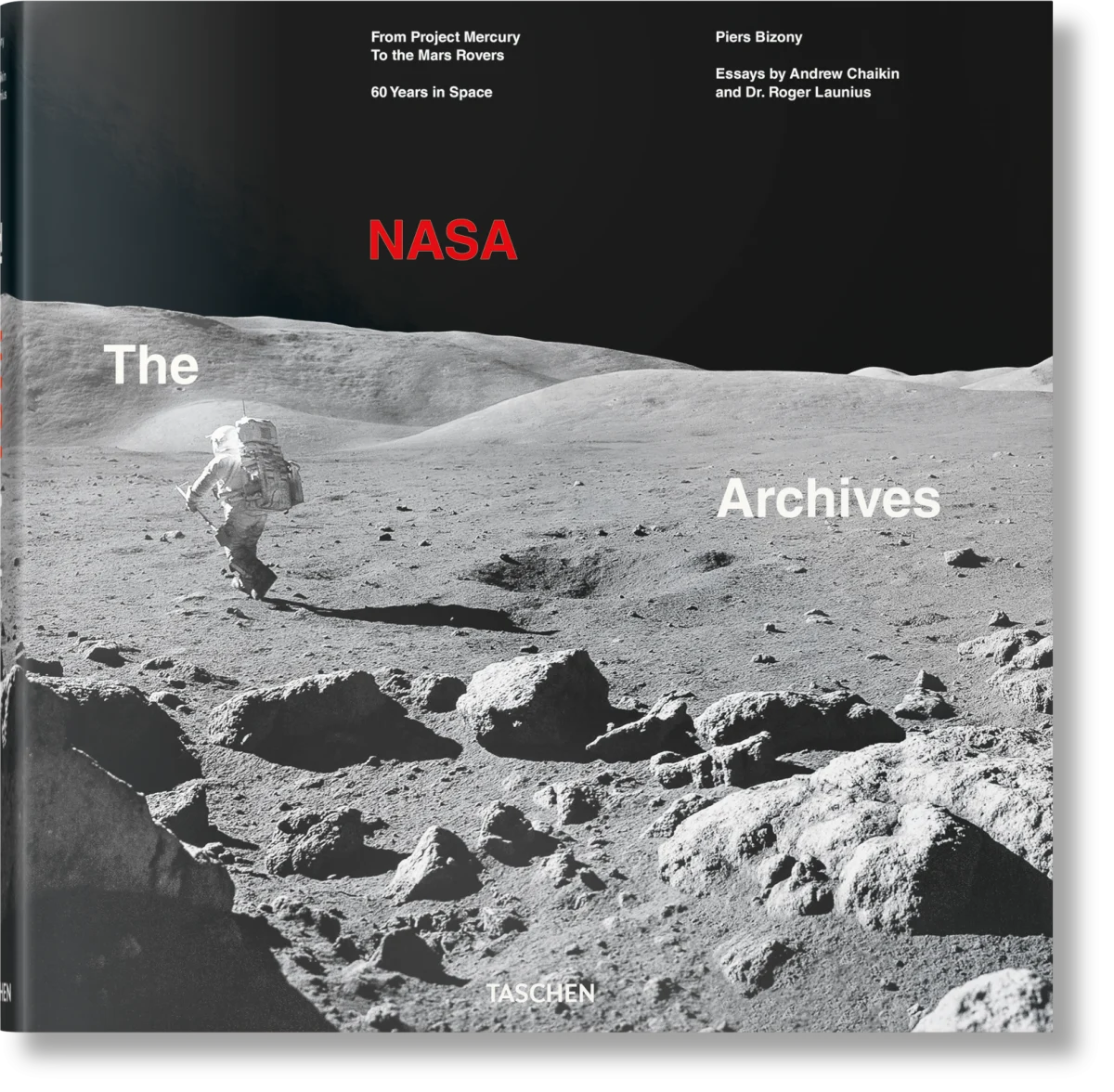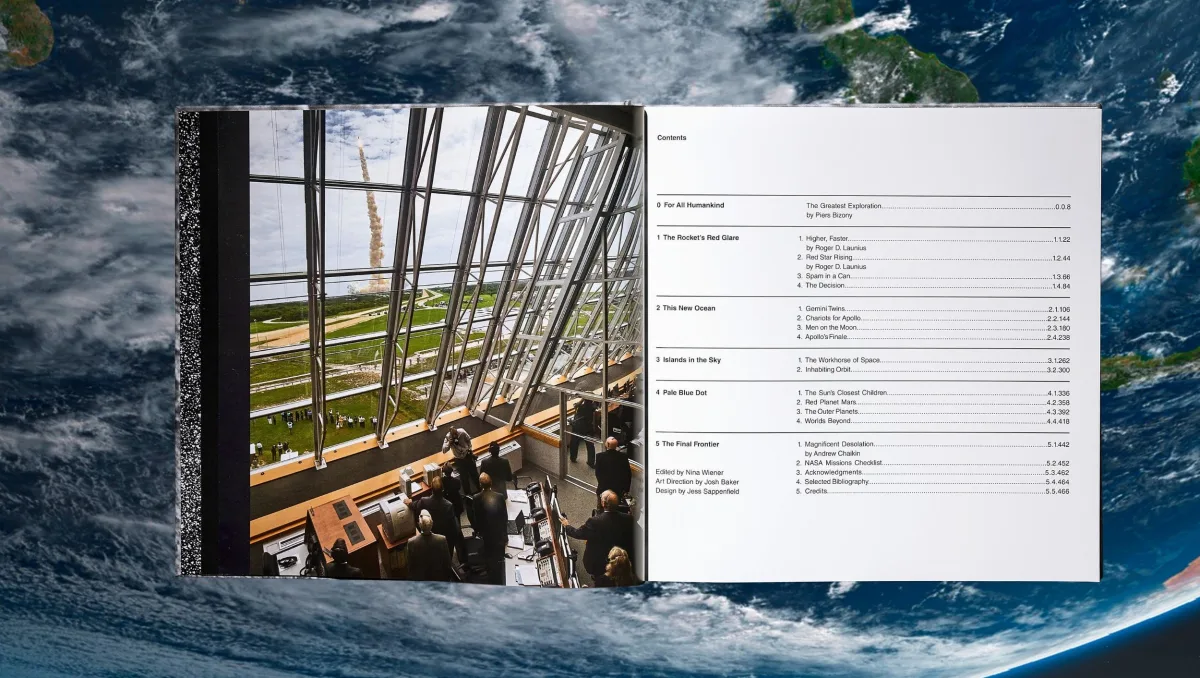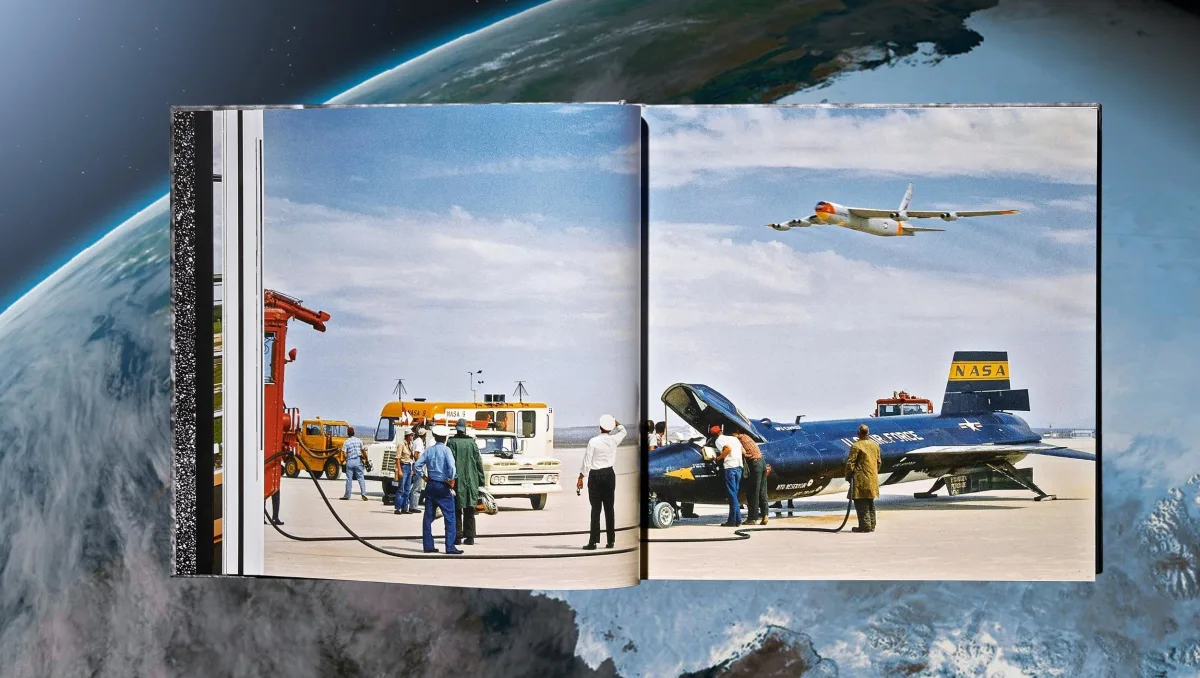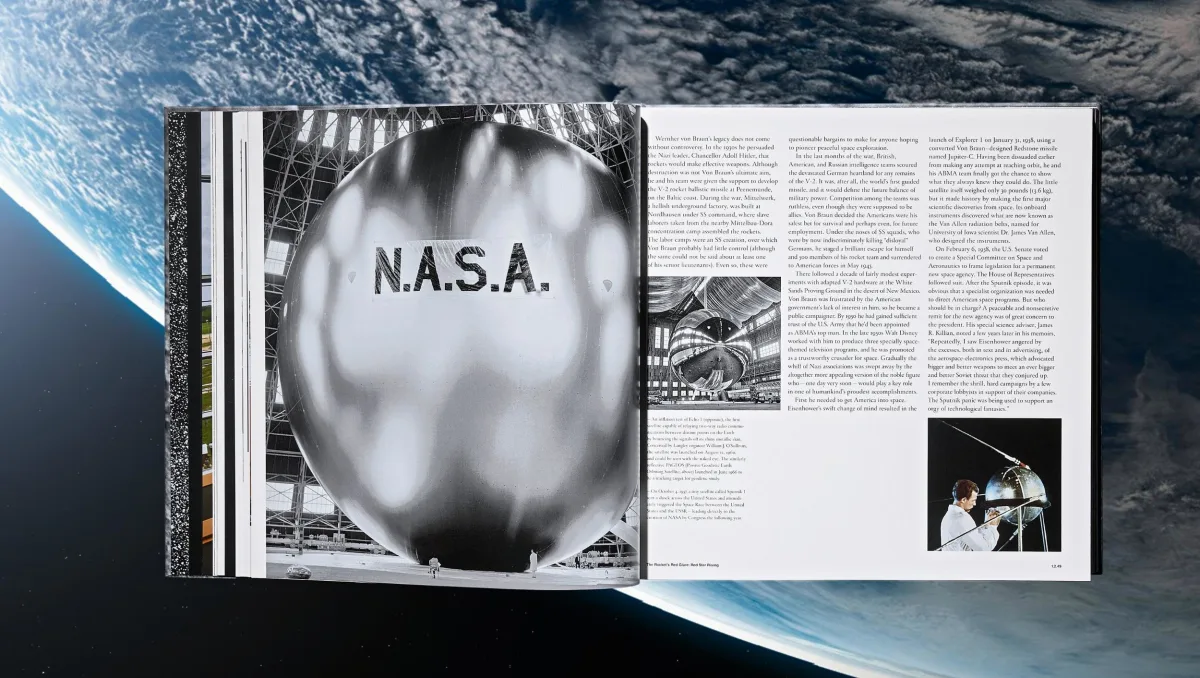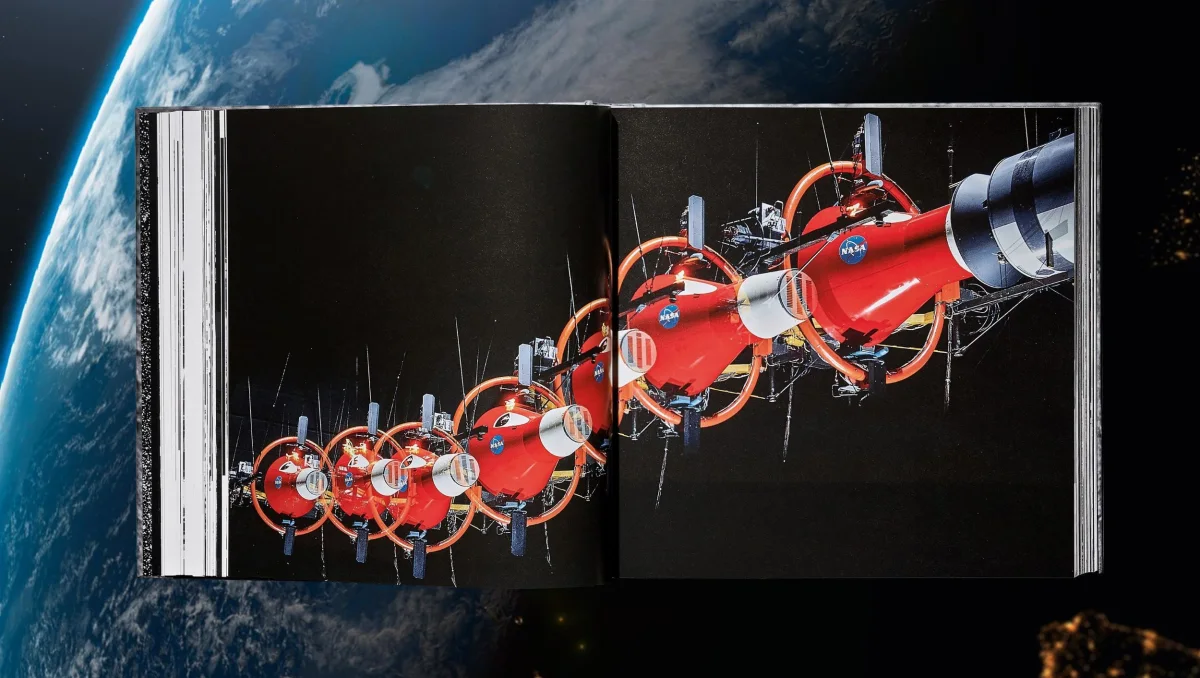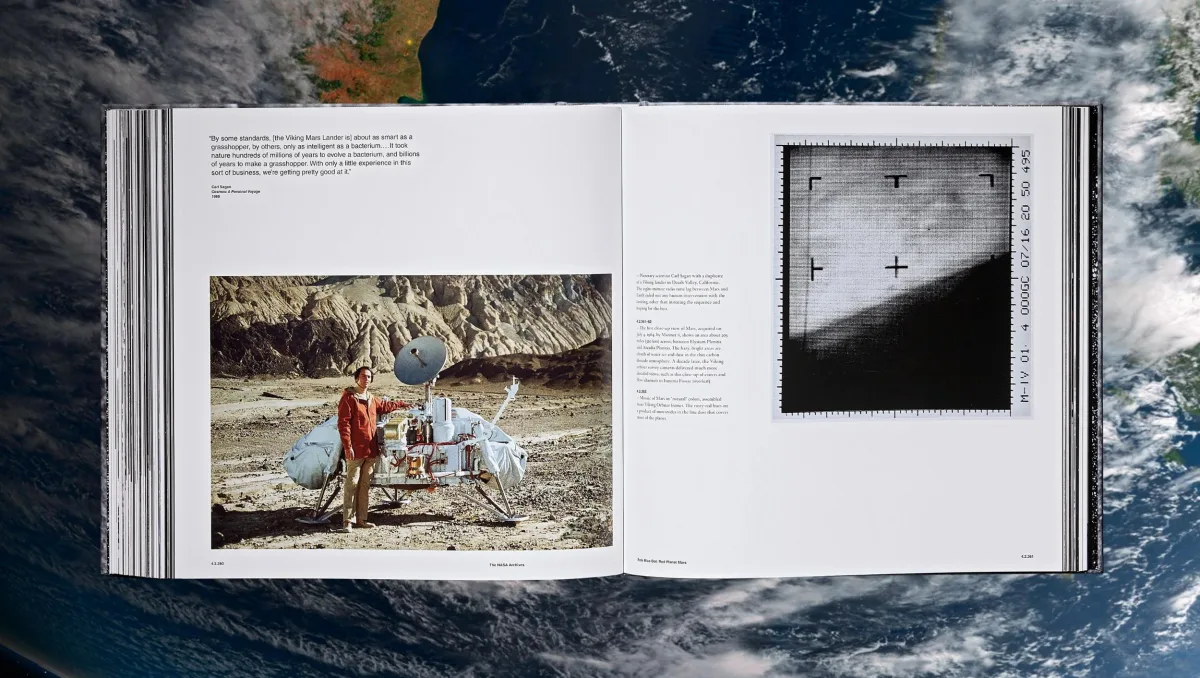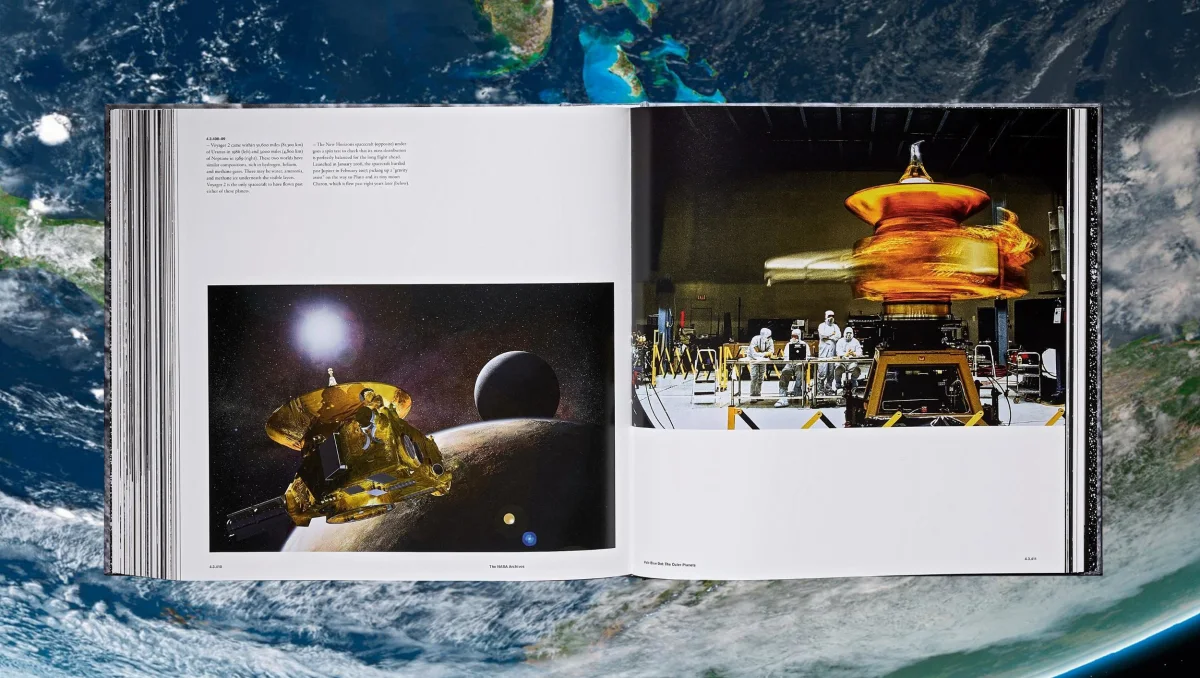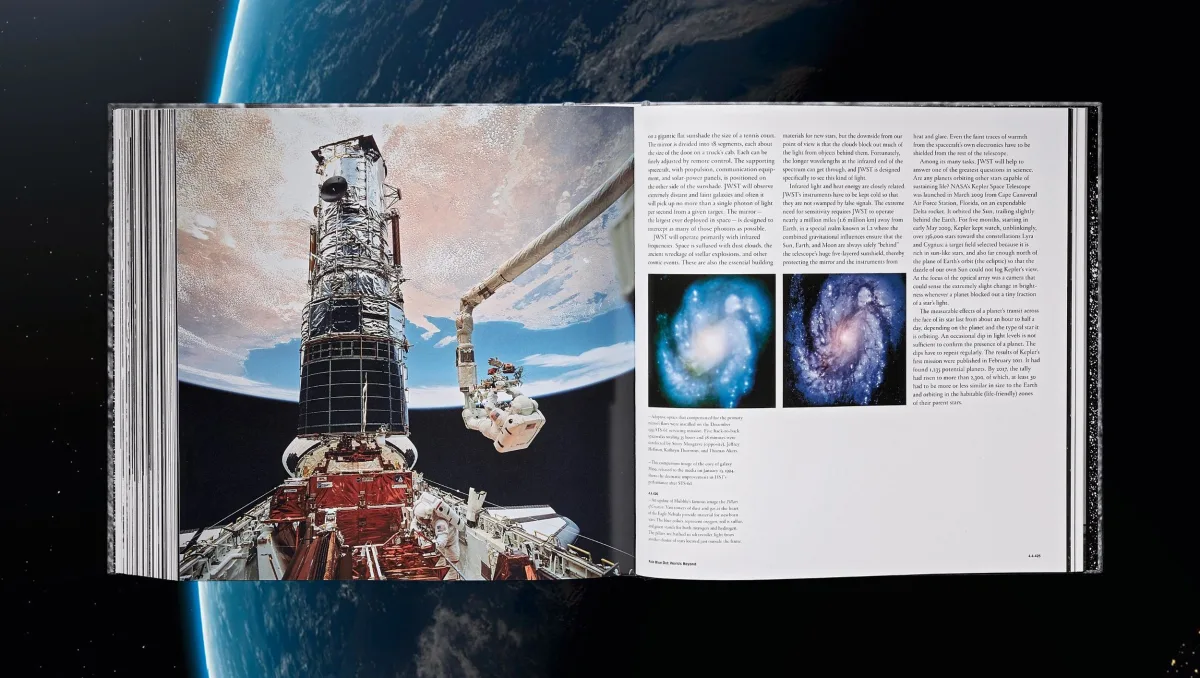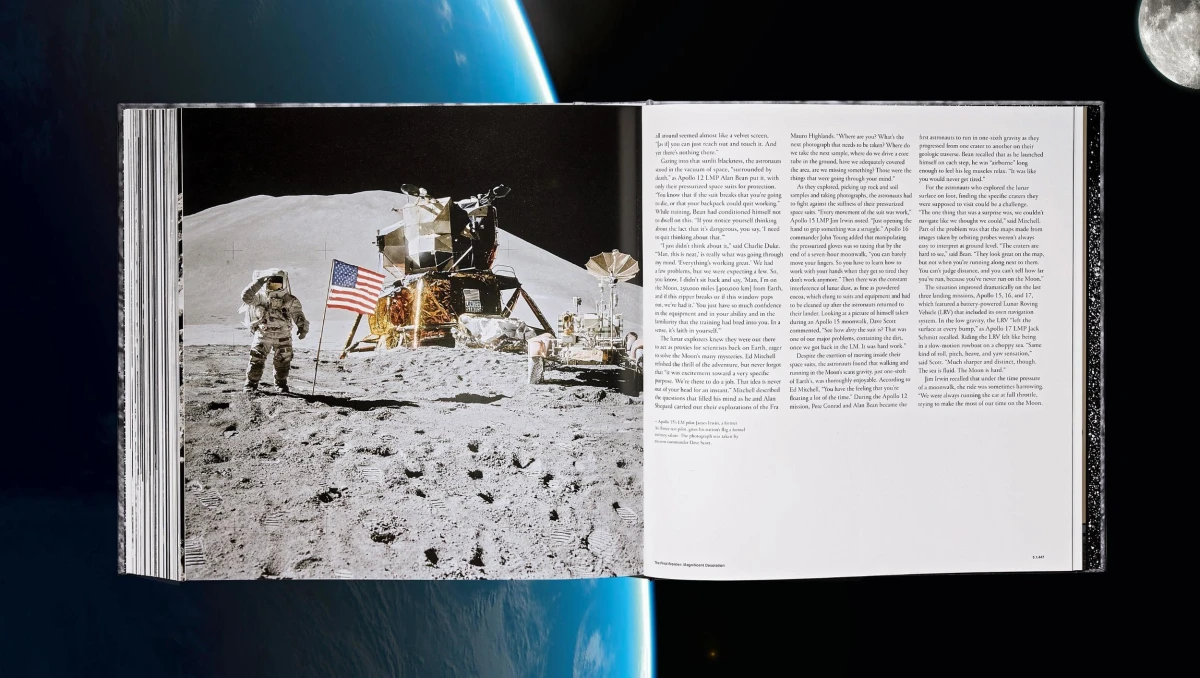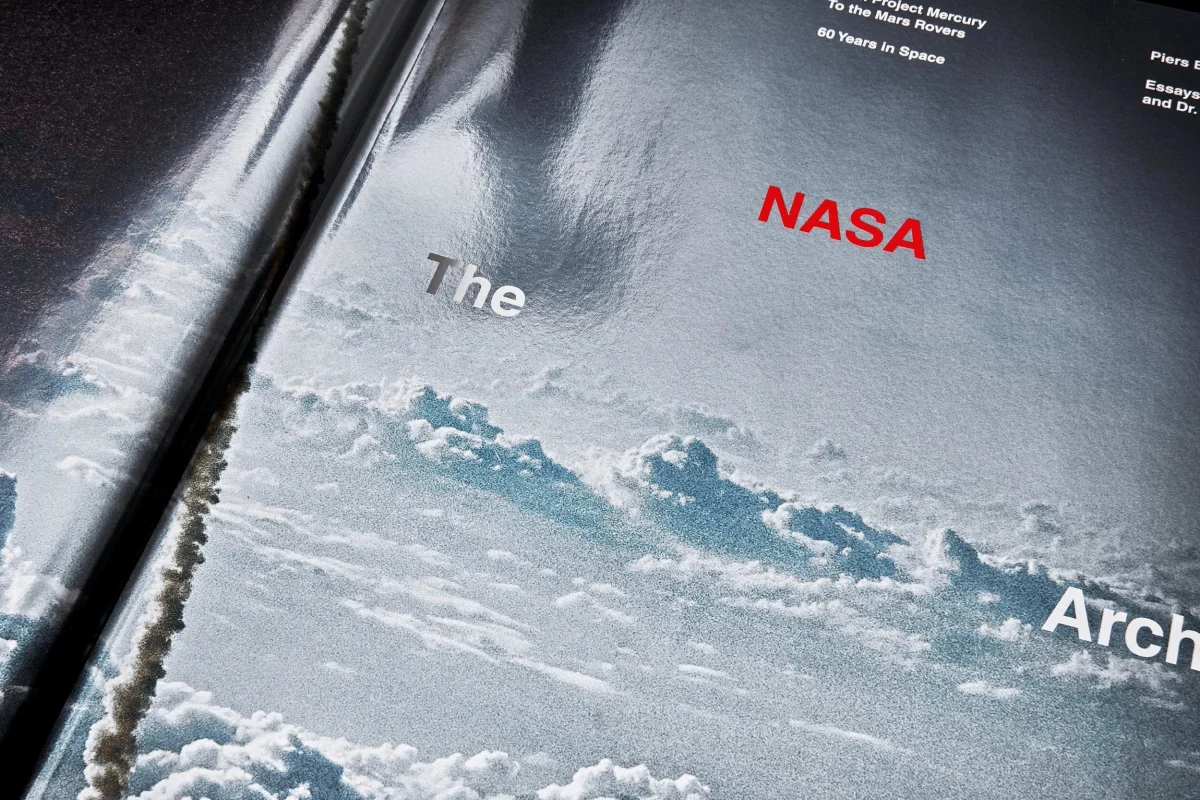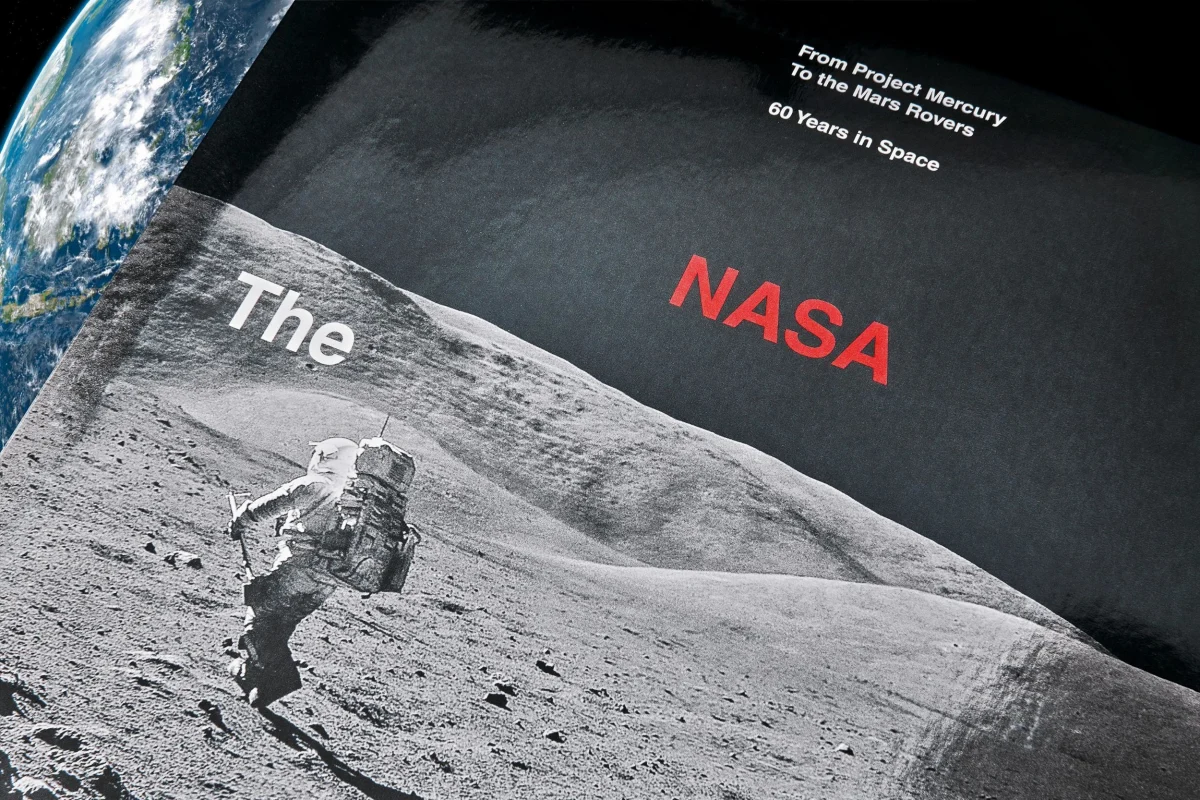The NASA Archives. 60 Years in Space
150Enter your email address here and we will notify you when copies become available:
“This beautiful book will inspire the astronaut in all of us.”

The NASA Archives. 60 Years in Space
150To Infinity and Beyond
Journey through the U.S. space program’s fascinating pictorial history
Throughout NASA’s 60-year history, images have played a central role. Who today is not familiar with the Hubble Space Telescope’s mesmerizing views of the universe or the pin-sharp panoramas of Mars from NASA’s surface rovers? And who could forget the photographs of the first men walking on the Moon?
Researched with the collaboration of NASA, this collection gathers more than 400 historic photographs and rare concept renderings, scanned and remastered using the latest technology and reproduced in extra-large size. Texts by science and technology journalist Piers Bizony, former NASA chief historian Roger Launius, and best-selling Apollo historian Andrew Chaikin—and an extensive mission checklist documenting the key human and robotic missions—round out this comprehensive exploration of NASA, from its earliest days to its current development of new space systems for the future.
The NASA Archives is more than just a fascinating pictorial history of the U.S. space program. It is also a profound meditation on why we choose to explore space and how we will carry on this grandest of all adventures in the years to come.
The editor and author
Piers Bizony is a science and technology writer. His publications include Atom, The Man Who Ran the Moon, Starman, and The Making of Stanley Kubrick’s 2001: A Space Odyssey.
The contributing authors
Andrew Chaikin is the author of the best-selling book A Man on the Moon, a detailed account of the Apollo lunar missions based on firsthand testimony. This work formed the basis for the triple Emmy award–winning HBO series From the Earth to the Moon.
Dr. Roger Launius served as Chief Historian at NASA from 1990 until 2002, after which he was appointed senior curator in the Space History Division of the National Air and Space Museum, Washington D.C. He was also a member of the Columbia Accident Investigation Board in 2003.
The NASA Archives. 60 Years in Space
Hardcover, 33 x 33 cm, 5.50 kg, 468 pagesISBN 978-3-8365-6950-7
Edition: English5

